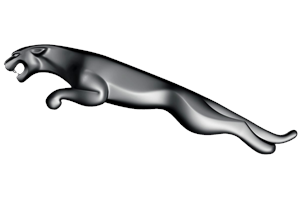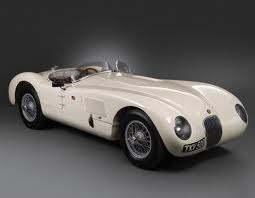


This edition of the Jaguar E Type 2+2 4.2L is the 4 speed / Manual version and was first brought out in 1966. This was at around the same time as the introduction of the 1966 AC Cobra 427 and the 1966 Chevrolet Corvette C2 Stingray 427 425hp.This particular Jaguar E Type has a 4235cc Naturally Aspirated Petrol powerplant with 6 cylinders in a St formation.
The E Type shares its Petrol St6 engine configuration with the likes of the 1965 Aston-Martin DB6 1965 and the . If you're looking for other fast cars which share the E Type's Rear Wheel Drive, Coupe combination then how about the 1982 Fiat X1/9 1.5 8V or the 1965 Aston-Martin DB6 1965.
Weighing in at 1245 kgs (2744 lbs) this makes the Jaguar E Type 2+2 4.2L in the same weight category as the 2020 Audi A1 A1 Sportback 35 TFSI S tronic S line or the give or take 50kg.
In terms of power the 4235cc 12V St6 engine produces 265 bhp (197 kW) @ 5400 rpm similar to the 2022 Hyundai i30 N Performance 2.0 Turbo (276 bhp) or the 2021 KIA K5 GT 2.5 Turbo (290 bhp).
The Naturally Aspirated St6 throws out 284 lb-ft (385.0 Nm) @ 4000 rpm placing it with cars of similar torque performance figures such as the 2023 Toyota Corolla GR Circuit Edition 1.6 Turbo (273 lb-ft) or the 2023 Toyota Corolla GR Morizo Edition 1.6 Turbo (295 lb-ft).
If one combines the weight with power or torque performance for the Jaguar E Type you can get a better idea of it's real world performance.
![Rolls-Royce Ghost Black Badge 6.6 V12 Twin turbo - [2021] image Rolls-Royce Ghost Black Badge 6.6 V12 Twin turbo - [2021] image](/editionimages/2207.jpg)
The 2021 Rolls-Royce Ghost Black Badge 6.6 V12 Twin turbo (237.7 bhp per ton) has similar Bhp Per Ton stats as the Jaguar E Type.
The Jaguar E Type has a Power to weight ratio of 212.8 bhp per ton and 228.1 lb-ft per ton. Bhp Per Ton figures of the 1966 E Type competing with the 2021 Rolls-Royce Ghost Black Badge 6.6 V12 Twin turbo (237.7 bhp per ton) or the 2017 BMW X5 M 4.4 V8 Turbo (237.6 bhp per ton).
If you agree with the late great Carroll Shelby then arguably an even better indicator of potential performance, Torque. Use weight as well and you end up with - Torque per ton, with the Jaguar E Type generating around 228.1 lb-ft per ton. If you're curious as to what other cars have as much torque to weight then look no further than the 2005 Ford Mustang Cobra GT500 (253.0 lb-ft per ton) or the 1994 Ferrari 512 M (252.9 lb-ft per ton).
With a 0-60mph time of 8.90 secs or a 0-100km/h (0-62mph) of 9.2 secs, this made the Jaguar E Type 2+2 4.2L as fast as the 2008 Audi A4 1.8T Avant (8.90 secs) the 2005 Suzuki Swift 1.6 VVT Sport (8.90 secs) the 2000 Vauxhall-Opel Omega 3.2 V6 Automatic (8.90 secs) the or the 1990 Volvo 940 2.3 Turbo (8.90 secs). This Jaguar E Type 2+2 4.2L is also faster than the 2012 Mini Cooper SD Paceman (9.00 secs) the 2007 Ford Taurus AWD 3.5 V6 (9.00 secs) the 2004 Vauxhall-Opel Corsa 1.8 GSi (9.00 secs) the and the 2002 Land-Rover Range Rover V8 Vogue (9.00 secs).
When talking about the performance of the Jaguar E Type on the drag strip it can reach a quarter mile in an estimated 13.73 secs @ 99.6 mph. Similar performance down the quarter mile can be found with the the 2011 Infiniti FX 50 5.0 V8 (13.67 secs), the 2017 Dodge Challenger RT 5.7 V8 (13.67 secs), and the 2017 KIA Stinger GT 3.3 V6 Turbo (13.67 secs).
Modern performance cars are often artificially restricted to 155mph. The 1966 version of the Jaguar E Type 2+2 4.2L has a maximum speed of 150mph.
If maxing out your car on the AutoBahn is your thing and you're wondering what's faster than the 1966 Jaguar E Type 2+2 4.2L then how about the 2013 Porsche Panamera Diesel 3.0 V6 Turbo (161 mph), the 2013 Porsche Panamera 3.6 V6 (161 mph), or the 2011 Radical SR3 SL 2.0 Turbo (161 mph).









Volkswagen-VW Golf GTD DSG 2.0 Turbo Diesel
Engine: Turbo Diesel | 1968cc 16v St4
Top Speed: 142 mph
0-60mph: 7.30 seconds



















